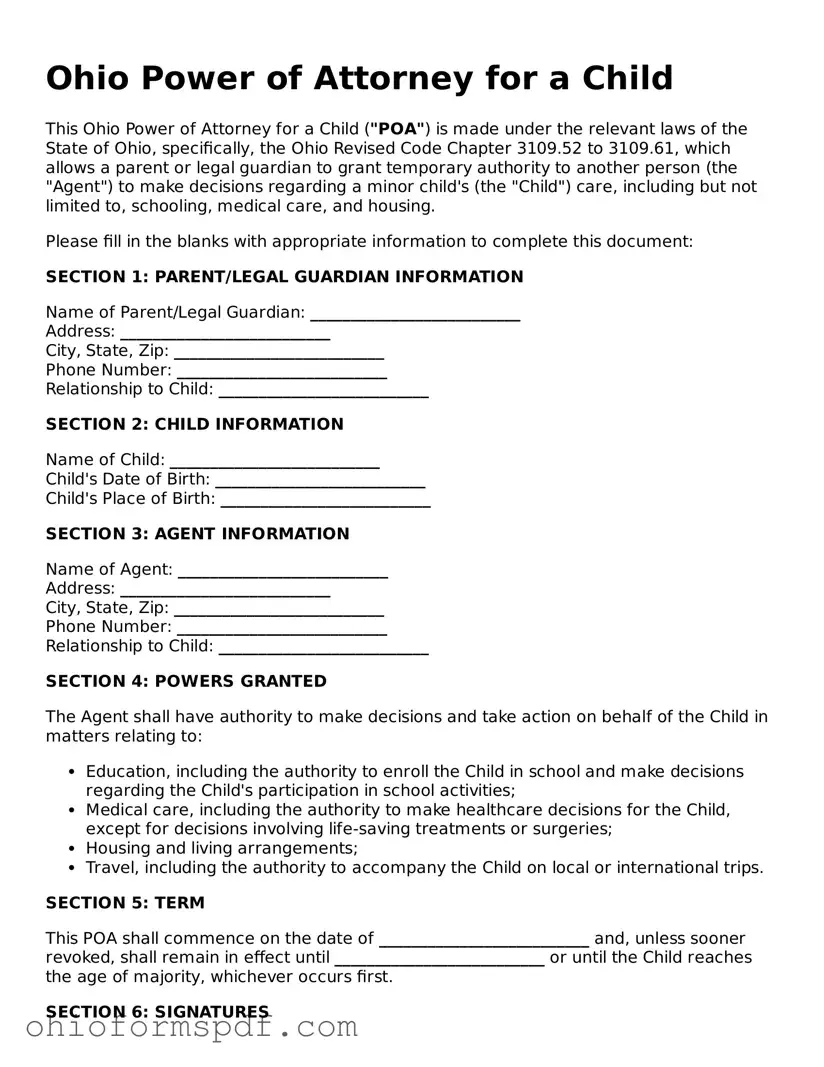Ohio Power of Attorney for a Child
This Ohio Power of Attorney for a Child ("POA") is made under the relevant laws of the State of Ohio, specifically, the Ohio Revised Code Chapter 3109.52 to 3109.61, which allows a parent or legal guardian to grant temporary authority to another person (the "Agent") to make decisions regarding a minor child's (the "Child") care, including but not limited to, schooling, medical care, and housing.
Please fill in the blanks with appropriate information to complete this document:
SECTION 1: PARENT/LEGAL GUARDIAN INFORMATION
Name of Parent/Legal Guardian: __________________________
Address: __________________________
City, State, Zip: __________________________
Phone Number: __________________________
Relationship to Child: __________________________
SECTION 2: CHILD INFORMATION
Name of Child: __________________________
Child's Date of Birth: __________________________
Child's Place of Birth: __________________________
SECTION 3: AGENT INFORMATION
Name of Agent: __________________________
Address: __________________________
City, State, Zip: __________________________
Phone Number: __________________________
Relationship to Child: __________________________
SECTION 4: POWERS GRANTED
The Agent shall have authority to make decisions and take action on behalf of the Child in matters relating to:
- Education, including the authority to enroll the Child in school and make decisions regarding the Child's participation in school activities;
- Medical care, including the authority to make healthcare decisions for the Child, except for decisions involving life-saving treatments or surgeries;
- Housing and living arrangements;
- Travel, including the authority to accompany the Child on local or international trips.
SECTION 5: TERM
This POA shall commence on the date of __________________________ and, unless sooner revoked, shall remain in effect until __________________________ or until the Child reaches the age of majority, whichever occurs first.
SECTION 6: SIGNATURES
This document must be signed in the presence of a notary public or two adult witnesses, neither of whom are named as the Agent in this POA, as per Ohio law.
In witness whereof, the undersigned have executed this Power of Attorney as of the date last signed below:
Parent/Legal Guardian's Signature: __________________________
Date: __________________________
Agent's Signature: __________________________
Date: __________________________
Notary Public or Witness Signatures:
- Name: __________________________
Signature: __________________________
Date: __________________________
- Name: __________________________
Signature: __________________________
Date: __________________________
